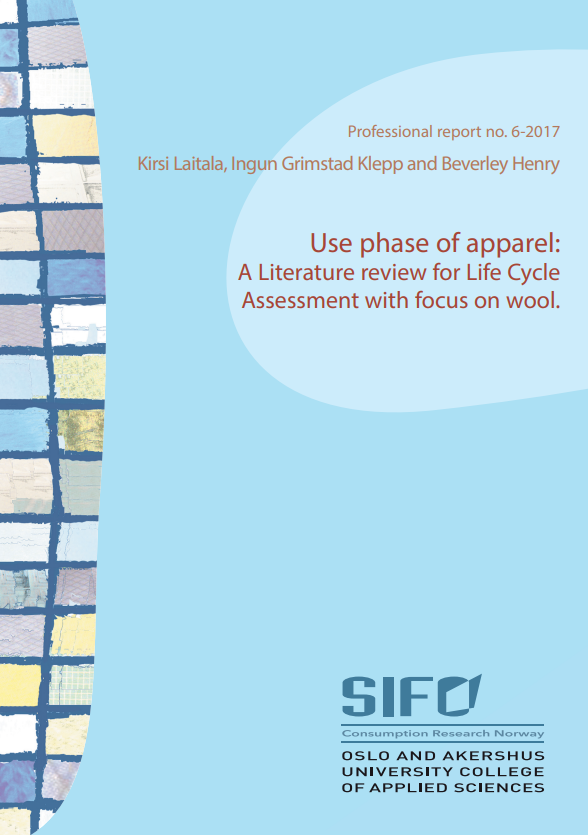Kirsi Laitala, Ingun Grimstad Klepp & Beverley Henry
Summary
This report presents a literature review of clothing use phase. The purpose is to support improved methodological development for accounting for the use phase in Life Cycle Assessment (LCA) of apparel. All relevant textile fibres are included in the review. However, the main focus is on wool. We ask whether the use of wool has different environmental impacts than clothes in other fibres. The report builds on a review of literature from the past 20 years. The review showed that clothing made from different materials are used, and reused in different ways. Wool is washed differently as it has about ten degrees lower washing temperature than the average laundry in Europe. Wool is also more likely to be either dry-cleaned or washed by hand than other textiles. Moreover, when dried, it is less likely to be tumble-dried.
When comparing the number of days between the washes of different types of clothes, we found that respondents were likely to use their woollen products about twice as long between washes compared to their equivalent cotton products. We also found that woollen products had a longer average lifespan and were more likely to be reused or recycled. There is a lot of research-based information available concerning the use and re-use of clothing, and we believe there are sufficient results available on which to base LCA studies. Furthermore, we believe that environmental tools that compare different fibres but exclude use phase provide misleading results. Including the use phase in fibre ranking benchmark tools will improve the rigour and accuracy of these tools for all fibres, compared to reporting results for fibre production only. However, we have also shown that there are several methodological, conceptual and empirical knowledge gaps in existing literature.
Click here to read the full report (researchgate.net)
